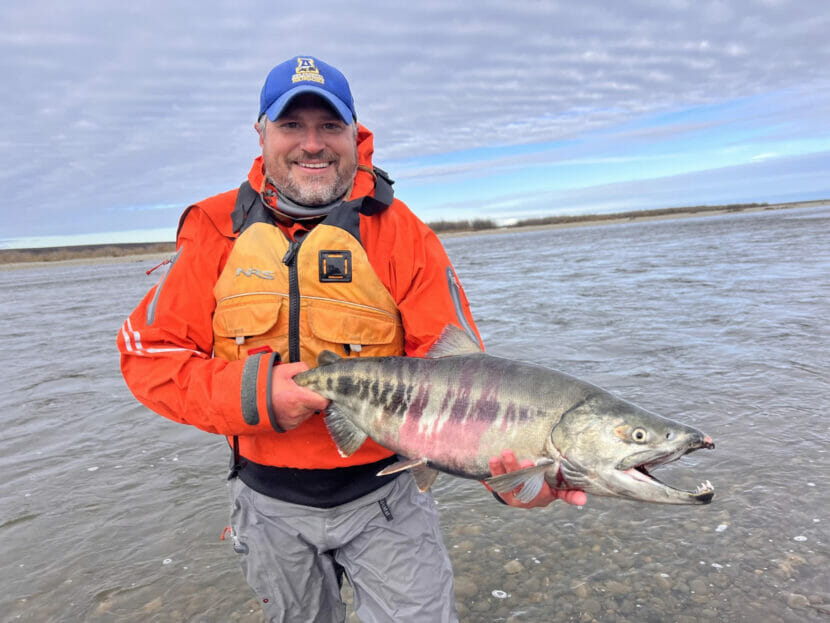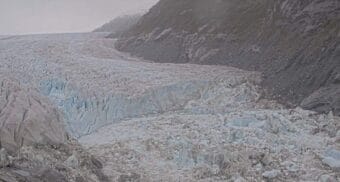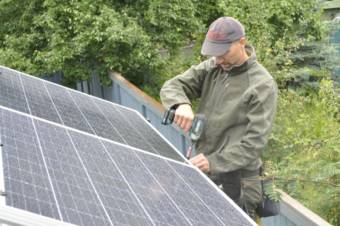
University of Alaska Fairbanks associate professor of fisheries Peter Westley is clear that there’s nothing new about salmon straying into Arctic Ocean waters. Westley says the fish have long been occasionally observed and caught, but their numbers appear to be increasing.
“And we were interested in whether the change in the sort of frequency of salmon being encountered…is that a perhaps indicator that the salmon are not only showing up in the ocean but are showing up in rivers and are potentially working to establish populations in a new region.”
Last month, Westley lead a team that aerially surveyed two Colville River tributaries, the Anaktuvuk and the Itkillik, and counted about a one hundred chum salmon equally split between the two Arctic rivers. He says movement of a species farther north is a clear signal of climate change.
“So in the past where those fish might have been sort of hopeful colonists showing up and kind of giving it a go, the conditions are just changing enough that we might be on the cusp of having it be a viable success story for the salmon.”
Elizabeth Lindley, a PhD student working on the project, says that while the development is positive for the salmon, it’s not necessarily good for the region’s people.
“Being Yupik and from Bethel, I was really interested in this question about salmon, which are really important to me, maybe impacting other Indigenous ways of life and ecosystems,” she said.
Lindley helped organize and lead an Arctic salmon workshop last December where she says people shared difference perspectives on the movement of the fish.
“Some community members that were present expressed concern over increasing salmon and not wanting to catch more salmon because it interferes with cultural harvesting practices, but I think it really varies by the person and the community,” she said.
Lindley says the impact of salmon sharing spawning grounds with Arctic char and Dolly Varden is among the unanswered questions.
The UAF team deployed temperature sensors in gravel where the chum salmon were observed spawning to track whether the water remains warm enough for the eggs to survive. The origin of the Arctic chums is unknown, but Westley says analysis of samples gathered from the fish this fall will provide clues.
“Extract DNA and sort of compare that to the genetic structures of known populations,” he said. “You can also use the water signatures, the chemistry of the waters themselves that gets archived in the ear bones, the otoliths.”
Lindley and Westley both emphasize the value of Indigenous knowledge in understanding the history and future of salmon in the Arctic Ocean and North Slope rivers. The UAF lead research group plans to head back to the Anaktuvuk and Itkillik rivers next fall to look for smolt as well as more spawning adults.


